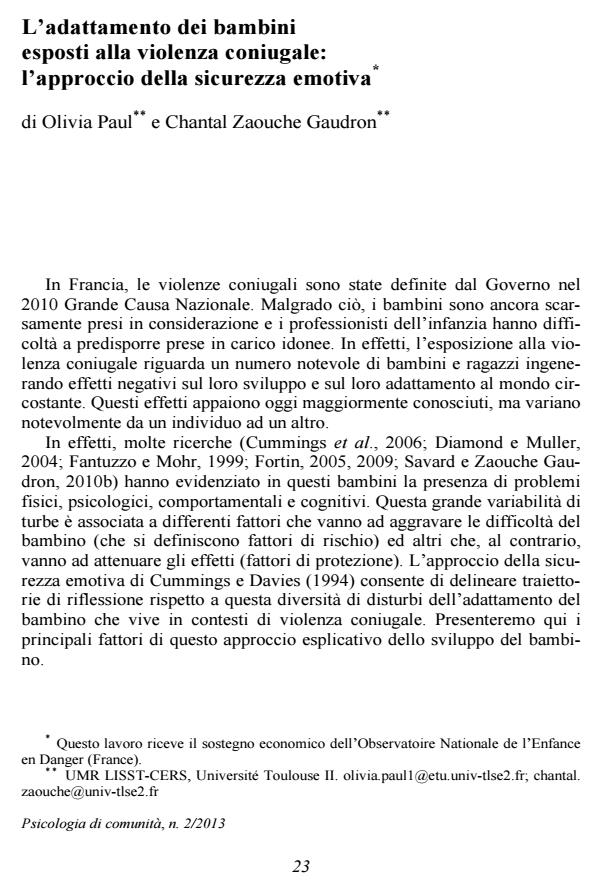Adjustment in children exposed to marital violence: the emotional security approach
Journal title PSICOLOGIA DI COMUNITA’
Author/s Olivia Paul, Gaudron Chantal Zaouche
Publishing Year 2014 Issue 2013/2
Language Italian Pages 9 P. 23-31 File size 33 KB
DOI 10.3280/PSC2013-002003
DOI is like a bar code for intellectual property: to have more infomation
click here
Below, you can see the article first page
If you want to buy this article in PDF format, you can do it, following the instructions to buy download credits

FrancoAngeli is member of Publishers International Linking Association, Inc (PILA), a not-for-profit association which run the CrossRef service enabling links to and from online scholarly content.
This article aims to understand the development of children exposed to domestic violence in the light of emotional security model developed by Cummings and Davies (1994). We have highlighted the various factors that may have an effect - positive or negative - on the adjustment of children living in such a context. These factors include both the characteristics of the child, but also those of his family and the environment, considering the degree of exposure of the child. The advantage of relying on this theoretical model can be used, for professionals and researchers, to design the various influences to which the child is facing, but also to understand the variability of the disorder in children exposed to domestic violence.
Keywords: Domestic violence, children exposed, emotional security, adaptation, development.
- Représentations d’attachement chez les enfants, âgés de 3 à 7 ans, exposés aux violences conjugales Laurence Berdot-Talmier, Christine Aubrion, Blaise Pierrehumbert, Chantal Zaouche-Gaudron, in Devenir /2016 pp.21
DOI: 10.3917/dev.161.0021
Olivia Paul, Gaudron Chantal Zaouche, L’adattamento dei bambini esposti alla violenza coniugale: l’approccio della sicurezza emotiva in "PSICOLOGIA DI COMUNITA’" 2/2013, pp 23-31, DOI: 10.3280/PSC2013-002003